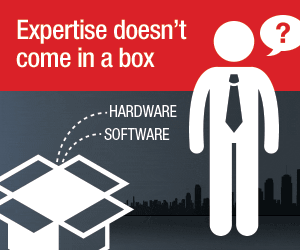If you are looking to see examples of biometrics in action, authenticating the common person and actively protecting real sensitive data, the place to look is the financial services market. Mobile wallets have taken off, enabling consumers to pay with their fingerprints, corporate banking clients scan their vein patterns to make high risk transactions through e-banking, and checking up on mobile accounts has never been easier or more secure with mobile apps that use face, voice, eyeprint and more for user login. But as we see at every major FinTech conference we go to, there is always something new and exciting on the horizon for biometric FinTech. The pace at which the market is developing has created an environment of innovation and excitement for what’s to come.
Here are three of the most exciting biometric FinTech innovations just around the proverbial corner:
–Register Now For The Financial Biometrics Month Webinar–
And spread the word: Tweet
-
Biometric Credit Cards
 Given how easy payments are becoming thanks to NFC enabled credit and debit cards, with transactions processed at the simple tap of a terminal, it’s no wonder that biometrics are on their way to being embedded in the plastic kept in your wallet. For years the biometric credit card concept has been on the table, with Mastercard and Zwipe partnering on arguably the most high profile trial of the technology. And while the road to fingerprint authenticated card based payments has been a long one (the afformentioned partnership was announced in 2014), it seems like we are finally on the verge of some big launches.
Given how easy payments are becoming thanks to NFC enabled credit and debit cards, with transactions processed at the simple tap of a terminal, it’s no wonder that biometrics are on their way to being embedded in the plastic kept in your wallet. For years the biometric credit card concept has been on the table, with Mastercard and Zwipe partnering on arguably the most high profile trial of the technology. And while the road to fingerprint authenticated card based payments has been a long one (the afformentioned partnership was announced in 2014), it seems like we are finally on the verge of some big launches.
A big trend in 2016 has been the shift in focus on behalf of fingerprint sensor manufacturers to target the smart card market. New sensor models were launched, new design wins were announced, and now we have started to see the fruits of an aggressive change in the market: at last month’s Money20/20 conference in Las Vegas, multiple credit cards with embedded biometric sensors were announced and demonstrated. While none have yet been commercialized, the increased interest in biometric authentication from the likes of Visa and Mastercard, combined with the increasingly available biometric smart card technology we saw at Money20/20, is enough to bet we aren’t very far off from tapping to pay with biometrics sans phone.
-
AI Banking
 Natural speech is on track to become a key user interface, according to new research from Opus, and as we’ve recently examined on FindBiometrics, the voice operated AI assistant is in dire need of a contactless biometric authentication upgrade. Speech recognition is already being integrated into peer-to-peer money transfer apps like PayPal’s Venmo, but so far we have seen very little overlap between contactless convenience and voiceprint security. Thankfully, all of that seems like it’s about to change.
Natural speech is on track to become a key user interface, according to new research from Opus, and as we’ve recently examined on FindBiometrics, the voice operated AI assistant is in dire need of a contactless biometric authentication upgrade. Speech recognition is already being integrated into peer-to-peer money transfer apps like PayPal’s Venmo, but so far we have seen very little overlap between contactless convenience and voiceprint security. Thankfully, all of that seems like it’s about to change.
A number of recent partnerships, acquisitions, and product announcements are paving the way for contactless financial services enabled by natural speech and authenticated with voice biometrics. Once again, we saw the beginnings of this next step in biometric finance at Money20/20, with Enacomm announcing EVA, its voice-based AI banking assistant that verifies users via voiceprint. We can expect similar innovations to come out of the recent acquisition of AGNITiO by speech recognition giant Nuance Communications, whose virtual assistant Nina is already deployed in financial institutions. Voice biometrics are already being used by international banks like Citi to authenticate users who bank over the phone, and by combining that high security, high convenience paradigm with the increasingly popular natural speech interface option, we might all soon be able to bank handsfree with the peace of mind that comes with strong authentication – a prospect that becomes more appealing every step we take in the direction of IoT and wearable tech.
-
Naked Payments
 With the rise of biometric commerce we are increasingly being tied closer to our financial data. When access to your bank account is granted by the unique biological characteristics expressed by your genes, it becomes an extension of your identity. In the dominant consumer biometric finance paradigm there is still a prominent device-based element to the equation – if you want to use Apple Pay at a McDonald’s you must have your iPhone to biometrically authenticate your transaction – but progress is being made toward payments systems that rely solely on biometrics.
With the rise of biometric commerce we are increasingly being tied closer to our financial data. When access to your bank account is granted by the unique biological characteristics expressed by your genes, it becomes an extension of your identity. In the dominant consumer biometric finance paradigm there is still a prominent device-based element to the equation – if you want to use Apple Pay at a McDonald’s you must have your iPhone to biometrically authenticate your transaction – but progress is being made toward payments systems that rely solely on biometrics.
Earlier this year there was buzz surrounding an Android Pay pilot that allowed fast food customers to simply pay for their meals with face scans (though there was still a hidden device element to the system). Elsewhere, Visa and Safran Identity & Security have been trialing and demoing their Scan & Pay solution that enables payments with the wave of a hand via the later company’s MorphoWave device. Perhaps most ambitiously, however, is a system being developed by the Japanese government that began trials in October and will allow tourists visiting Tokyo for the 2020 Olympic Games to pay for purchases using only their fingerprints. These initiatives and others like them, which leverage all sorts of modalities including iris and finger-vein recognition, are setting the stage for a financial biometrics future in which you are, by nature, inseparable from your precious money.
*
Stay posted to FindBiometrics throughout the month of November as we take a more in-depth look at the world of financial biometrics. Be sure to register in advance for our Financial Biometrics Month webinar, Biometrics Beyond Payments: Multi-Factor Security And The Fight Against Fraud.
Financial Biometrics Month 2016 is made possible by our sponsors Crossmatch and HID Global
—
November 17, 2016 – by Peter B. Counter


Follow Us